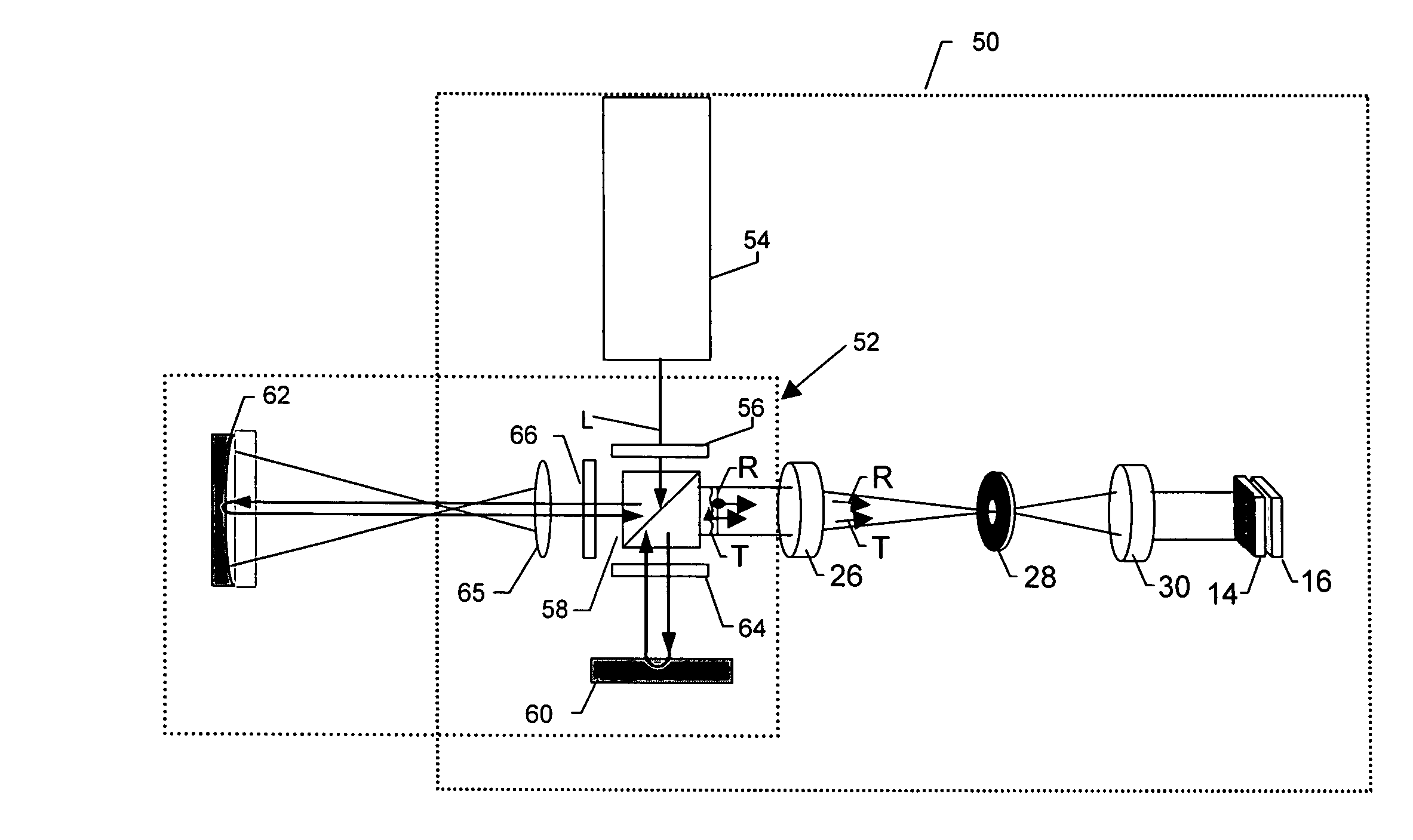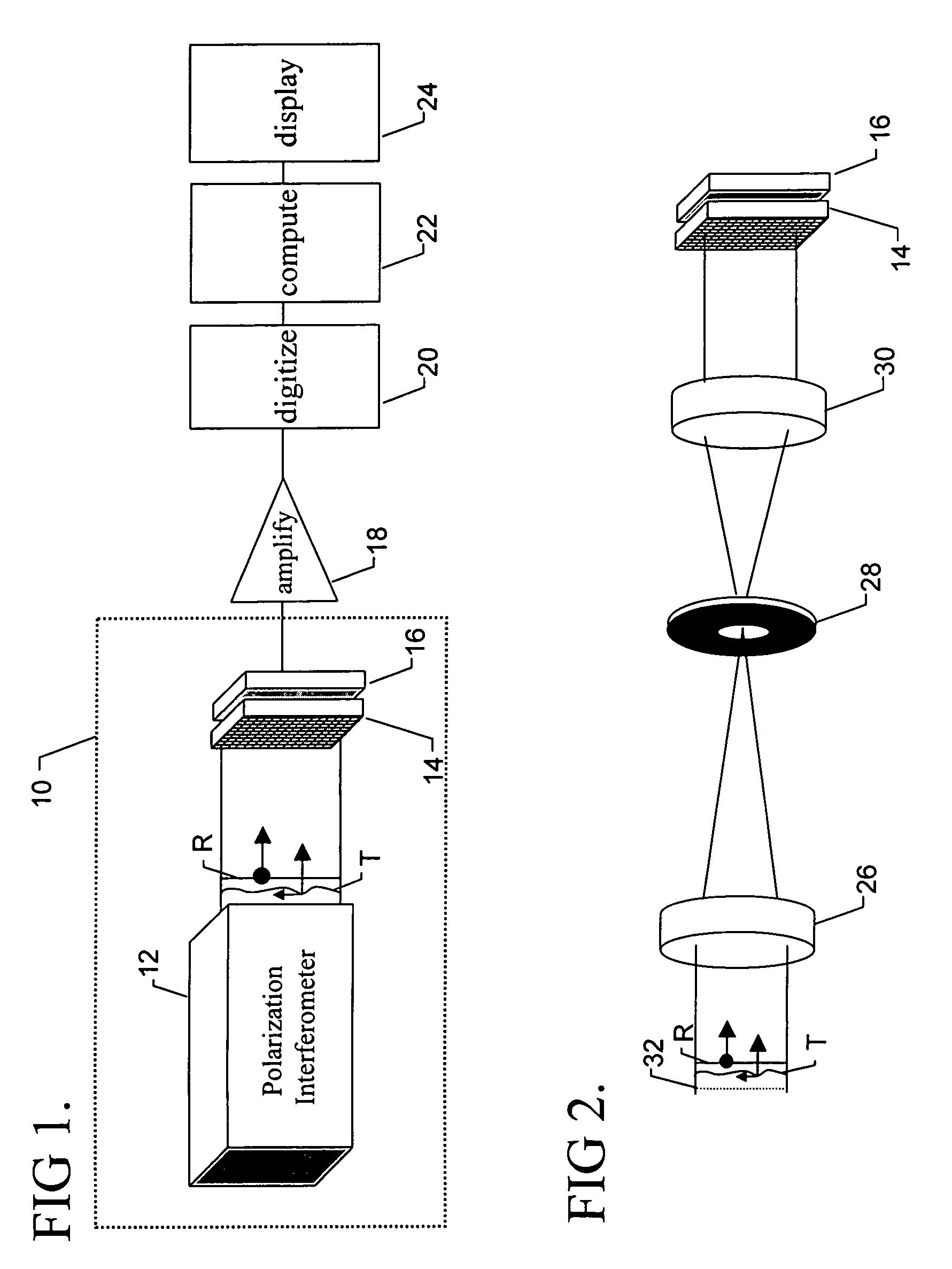Pixelated phase-mask interferometer
a phase-mask interferometer and pixelated technology, applied in the field of interferometry, can solve the problems of chromatic dispersion, compact and less expensive, and all the methods that require relatively complex optical and electronic arrangements, and achieve the effects of reducing the complexity of optical arrangements, avoiding complexity and chromatic dispersion, and increasing the range of operational wavelengths
- Summary
- Abstract
- Description
- Claims
- Application Information
AI Technical Summary
Benefits of technology
Problems solved by technology
Method used
Image
Examples
Embodiment Construction
[0043]The heart of the invention lies in a pixelated detector with a pixelated phase-mask subdivided into a plurality of sets of phase-mask pixels, such that each set produces a predetermined phase shift between orthogonally polarized test and reference beams. Thus, each set of phase-mask pixels provides a spatially separated intensity pattern (interferogram) on corresponding pixels of the detector. By providing at least three such sets of phase-mask pixels, each associated with a different phase shift, sufficient interferograms are produced to characterize a sample surface using conventional interferometric algorithms. For best results, the phase-mask pixels are preferably distributed uniformly throughout the phase-mask, so that each pixel is surrounded by adjacent pixels belonging to other sets. Similarly, for best resolution, a one-to-one correspondence is preferably used between the phase-mask and the detector pixels.
[0044]Thus, various parameters of test objects may be measured...
PUM
 Login to View More
Login to View More Abstract
Description
Claims
Application Information
 Login to View More
Login to View More - R&D
- Intellectual Property
- Life Sciences
- Materials
- Tech Scout
- Unparalleled Data Quality
- Higher Quality Content
- 60% Fewer Hallucinations
Browse by: Latest US Patents, China's latest patents, Technical Efficacy Thesaurus, Application Domain, Technology Topic, Popular Technical Reports.
© 2025 PatSnap. All rights reserved.Legal|Privacy policy|Modern Slavery Act Transparency Statement|Sitemap|About US| Contact US: help@patsnap.com



